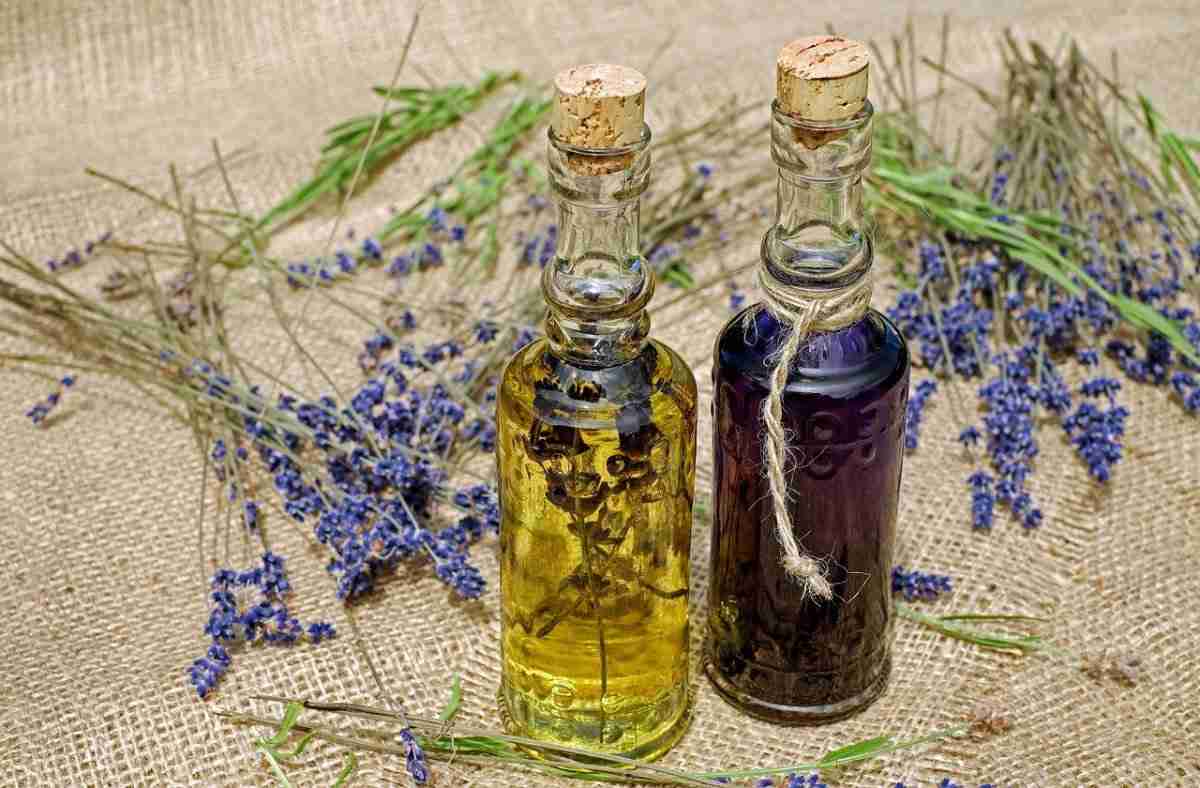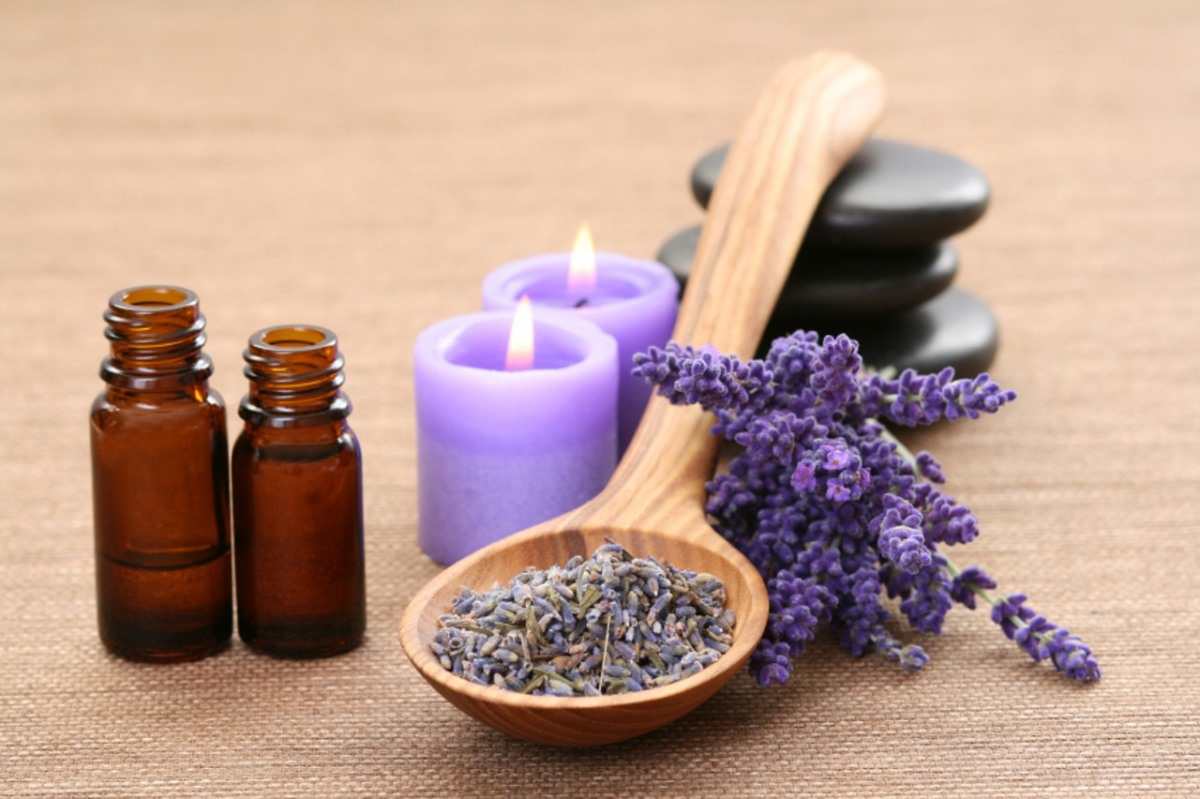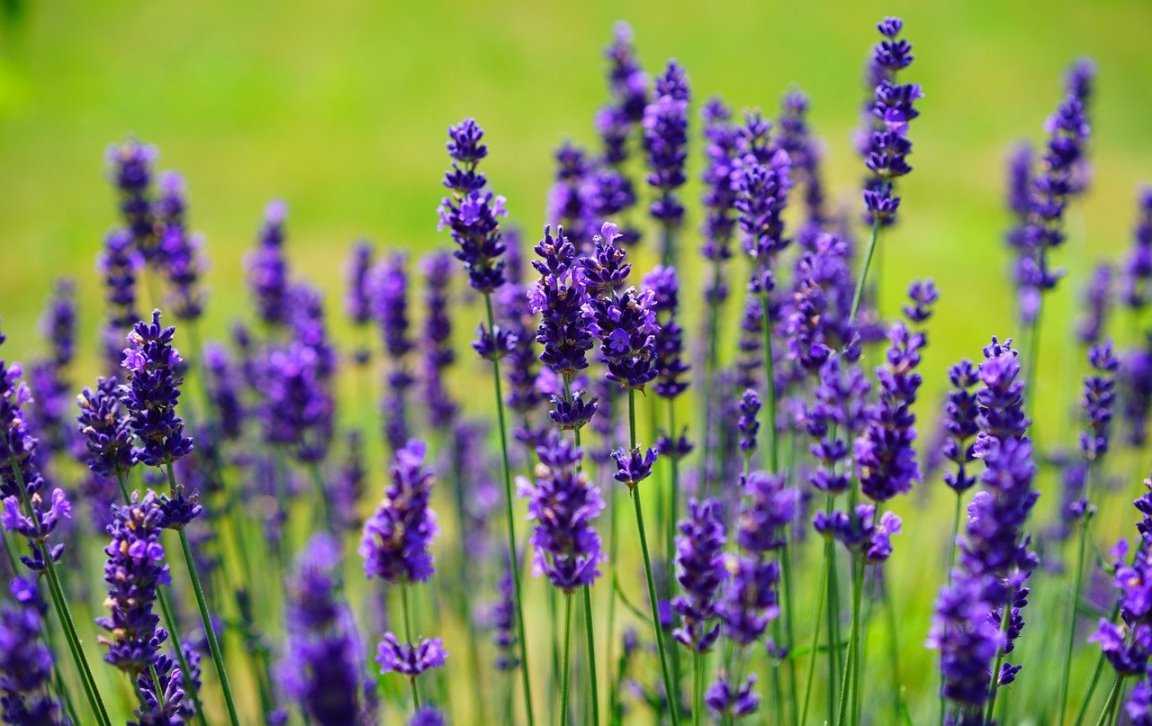Introduction to Lavender Oil Project Report, Manufacturing Business Plan: Lavender oil is an essential oil extracted from the flower spikes of some species of lavender. Lavender is cultivated in northern Africa and in the Mediterranean mountains, often involved in the extraction process for obtaining the oil. The medicinal benefits of using lavender to cure anxiety, hair loss, fungal infections, and wounds have been illustrated earlier. The reports and evidence are not concrete to the use of lavender to treat depression, nausea, high blood pressure, menstrual pain, or eczema, and among other certain conditions.
Lavender essential oil is extracted using the steam distillation of the fresh or semi-dried leaves. This process gives a high yield of oil compared to other methods due to the reduction of polar compound loss. The lavender blooms are preferred to be harvested in June month. Lavender flowers are compacted into a still. Fewer air pockets still affect greater oil yield. A boiler is next used to generate the steam from the bottom of the lavender flower at low pressure. The Lavender flower pockets having oil are broken from this heating stage and a pipe of cold water is passed through the center of the still. The hot Lavender oil vapor will get condensed on the cold pipe with the cold water and then moved into a holding tank where it is kept to settle. Because of polarity and the densities difference between the oil and water, these two will separate easily in the holding tank after which the water is piped out, keeping the Lavender essential oil.
A guide to Lavender Oil Project Report, Extraction Process, Manufacturing Business Plan

Constituents of Lavender Oil: The lavender essential oil has a chemically complex assembly with more than 150 active ingredients. This Lavender oil has high ester content, which is an aromatic compound with the property to relieve pain, stress-relieving, and stimulating impacts.
The main botanical ingredients of lavender oil are Linalool (non-toxic terpene alcohol with natural germicidal characteristics), linalyl acetate, terpinen-4-ol, and camphor. And other components in Lavender oil are responsible for their antiviral, antibacterial, anti-inflammatory properties.
Health benefits of Lavender Oil
Below are the health benefits of Lavender oil:
- Pain reliever: Lavender oil can provide relief for joint pain, tense muscles, and rheumatism, backache, sprains, and lumbago. If one massage lavender oil onto the affected area it will surely ease you from the pain.
- It aids in wound healing that might be formed by cuts and burns. Lavender can also aid to ease insect bites and irritating skin.
- Lender oil a natural anti-inflammatory agent, so it assists decrease itching, inflammation, and redness.
- Lavender oil facilitates your digestion. This oil provokes the mobility of the intestine and activates the production of bile and gastric juices, which may help treat abdominal pain, indigestion, colic, nausea, and diarrhea.
- Improves blood circulation by decreasing elevated blood pressure levels and is suitable medicine for hypertension.
Business plan for starting Lavender Oil Manufacturing Business
In case if you miss this: Palm Oil Manufacturing Project Report.

To start the profitable venture of Lavender Oil Manufacturing Business, you need to design a perfect business plan to lay a successful path:
- Market demand of Lavender Oil Manufacturing Business
- Implementation schedule of Lavender Oil Manufacturing Business
- List of approvals required for starting Lavender Oil Manufacturing Business
- Area required to start Lavender Oil Manufacturing Business
- Raw materials required for starting Lavender Oil Manufacturing Business
- List of machinery required to start Lavender Oil Manufacturing Business
- Manufacturing process of Lavender Oil
- Project economics of Lavender Oil Manufacturing Business
- Profitability in Lavender Oil Manufacturing Business
Market demand of Lavender Oil Manufacturing Business
The market potential of Lavender Oil is expected at 28.9 million USD in 2021. It is also estimated that it might reach 35.5 million USD by the end of the year because of its numerable health benefits. Lavender Oil market has an extensive growth rate CAGR of 6.5% throughout 2022 – 2028. This huge increase in demand is because of the high health benefits in it. It has antiviral, antibacterial, anti-inflammatory properties compared to other essentials oils.
Implementation schedule of Lavender Oil Manufacturing Business
- Market analysis and demand, applying for loan 0 – 1 month
- Preparation of business plan 1 – 2 months
- Financial support or investment 2– 4 months
- Selection of location and establishment of unit 3 – 4 months
- Power and water connection facility: 4 – 5 months
- Building construction and shed development 5 – 6 months
- Machinery and equipment purchase 6 – 7 months
- Procuring raw materials and recruiting of manpower 8 – 9 months
- Trial operations 10th month
List of approvals and permits required to start Lavender Oil Manufacturing Business
The important aspect to start Lavender Oil Manufacturing Business in India is to acquire the below list of licenses, permissions, and registrations –
- Register your business identity
- MSME registration
- GST registration
- ROC
- Get the PAN Card
- Registration of firm
- Shop Act License
- FSSAI License
- IEC Code
- Export License
- Fire and Safety
- ESI
- PF
- No Objection Certificate from pollution board
- Trade license from local municipal authority
Land and building construction for starting Lavender Oil Manufacturing Business
The area required to establish the Lavender Oil Manufacturing unit is 500 – 800 sq. mt. This is the minimum land required to establish a small-scale unit.
Raw materials required for starting Lavender Oil Manufacturing Business
Lavender flowers are the major raw materials required for extracting the oil.
Equipment required to start Lavender Oil Manufacturing Business
The list of machinery and equipment used in the extraction of Lavender oil has been included below:
- Evaporator vessel
- Cooling tower
- Pump (cooling water)
- Condenser
- Steam boiler
- Florentine flask
- Pump (condensate)
- Office furniture
- Packaging materials
The manufacturing/extraction process of Lavender Oil
You may also check this: Sunflower Oil Manufacturing Project Report.

This process is a common method followed for extracting essential oil from plant material when the products of our choice are temperature sensitive and can be ruined by too high temperatures.
This is performed when the steam introduced in the container or vessel vaporizes the plant material’s volatile compounds, which are ultimately condensed and collected in further steps.
Steam distillation is a separation technique that is applied for separating a mixture of components that are heat sensitive and performed using steam. The principle relies on variation in the boiling point of reducing the partial pressure of volatile compounds. Steam distillation has wide use in petroleum refineries, and to obtain essentials oils which are widely used in perfumery and flavoring sectors. Catnip is also extracted using steam distillation. The steam distillate content has two components, essential oil, and distillation water. The oil is obtained using a plant by distillation set-up that has a distillation tank, a condenser, and a separator. Freshly harvested grass is first cut into minute pieces and fed into the distillation tank. After closing the lid properly, steam is passed into the tank. Steam and the oil vapor can be cooled by the condenser into liquid and later obtained in the separator.
Steam distillation process:
A large container is known as Still is usually made of stainless steel, which contains the plant raw material and a provision to introduce steam to it. Through an inlet, steam is fed here and the plant material containing the desired oils will give out the plant’s aromatic molecules by converting them as vapor.
The vaporized plant molecules travel to the condensation flask called a condenser. Here, there are two separate pipes one for hot water to leave and the other allows the cold water to enter into the condenser. This process cools the vapor back into liquid form.
The aromatic liquid by-product passes from the condenser and gathers inside a receptacle placed below it, which is referred to as a Separator. Because water and oil do not mingle, the Lavender essential oil floats on top of the water. From here, Lavender oil is recovered.
Lavender Oil Project Report/ economics of Lavender Oil Manufacturing Business in India
Fixed Capital
- Land and site development: Rs. 1,00,000
- Building and civil works: Rs. 5,00,000
- Plant and machinery: Rs. 15,27,000
- Miscellaneous Fixed Assets: Rs. 1,98,000
- Preliminary and pre-operative expenses: Rs. 2,24,000
- Contingencies and escalation @ 5%: Rs. 1,16,000
- Working capital: Rs. 1,15,000
- Total: Rs. 27,80,000
Working Capital
- Raw materials: Rs. 90,000
- Power and utility: Rs. 10,000
- Salaries: Rs. 75,000
- Finished goods: Rs. 1,35,000
- Receivables: Rs. 1,50,000
- Total: Rs. 4,60,000
Total cost required for starting Lavender Oil Manufacturing Business:
Fixed Capital + Working capital = Rs. 27,80,000 + Rs. 4,60,000 = Rs. 32,40,000.
The income per annum in Lavender Oil Making Business
Total income / annum: Rs. 36,30,000.
Profitability in Lavender Oil Production Unit
Profit = Total cost – Total Income = Rs. 36,30,000 – Rs. 32,40,000 = Rs. 3,90,000 / year per unit.
- Handicraft Making at Home: A Small Profitable Business Idea
- Pet-Tech Startups: Innovations for Animal Lovers
- Tech Repair Services: Meeting the Demand for Gadget Maintenance
- Maximizing Rewards: Smart Credit Card Habits for Cashback and Points
- Ultimate Guide to Making Money from Goat Milk Business
- How to Start an Agricultural Value Added Product Business
- Value-Added Business Ideas for Greenhouse: The Best Ways to Make Profits with Greenhouse Farming
- How to Make Profits with Organic Country Chicken: Best Strategies for Beginners
- 10 Value-added Business Ideas for Millets: Low-investment and Highly Profitable
- Why Cleaning Service Business Becoming More Profitable in Metro Cities in India
- 10 Best Businesses to Start in Ayodhya for Profits
- Top Drone Business Ideas in India: Unlocking Aerial Innovation & Opportunities
- Top 10 Service Businesses You Can Start with No Money
- Ultimate Guide to Starting a Home-Based Advertising Agency Business
- Starting a Nail Salon Near Your Location: Check List, Business Plan, Licensing, and Opening Instructions
- Construction Company Name Ideas: Guide to Create New Construction Company Names
- 8 Best Small Businesses to Start in Hyderabad: Low-Cost and Profitable
- 10 Best Small Businesses to Start in Massachusetts: Low-Cost and Profitable
- 10 Best Small Businesses to Start in Maryland: Low-Investment and Profitable
- 10 Best Small Businesses to Start in Delaware: Low-Investment and Profitable
- 10 Best Small Businesses to Start in Connecticut: Low-Investment and Profitable
- Top 10 Best Online Pet Business Ideas: Exploring Cats to Dogs
- 10 Best Small Businesses to Start in Colorado: Low-Investment and Profitable
- Top 10 Profitable Small Business Ideas in California: Low-Investment Tips